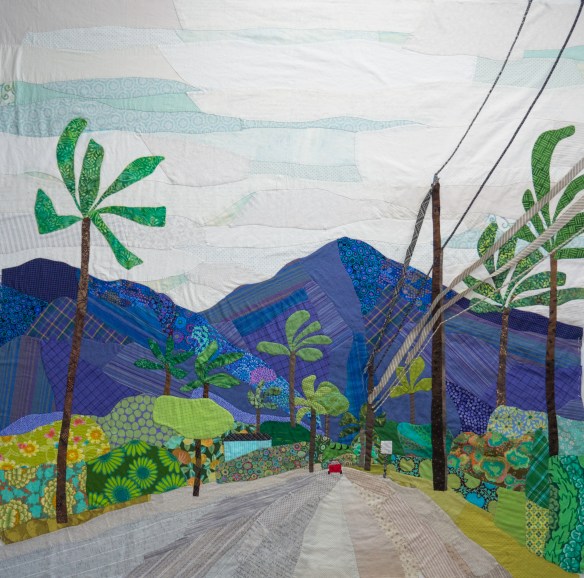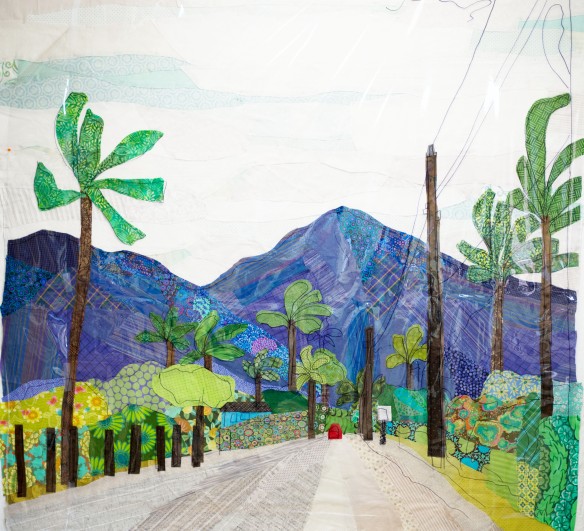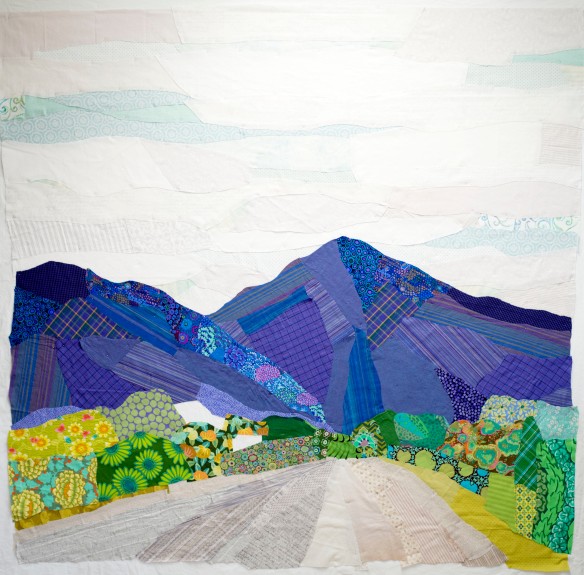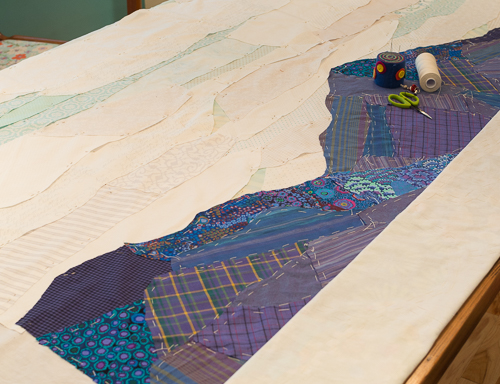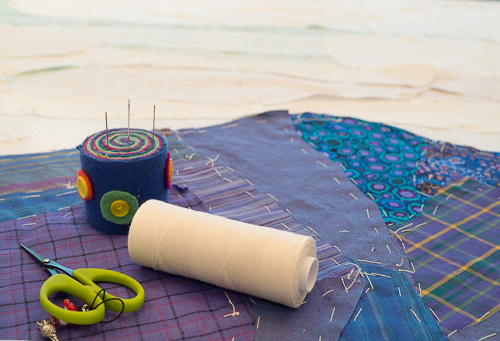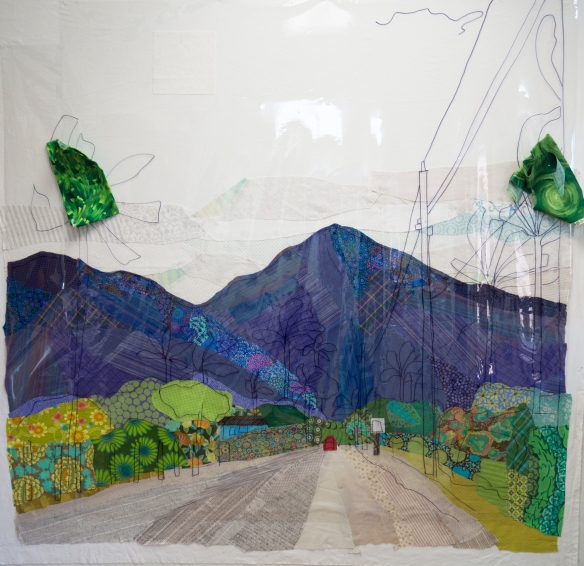After The Quilter’s Practical Guide To Color was published, people asked me to teach a class on color. I’ve been teaching this class for about a year and, judging from student responses, it is one of my very best classes.
This is a no-sew class. Students come with 4″ squares of white paper and 4″ squares of fabric in a variety of colors and values. I begin with a mini-version of my color lecture and then show how I organize fabric for a project. Students organize their own fabric squares and then the fun begins!
I choose a block from The New Quick & Easy Block Tool and a color combo and everyone quickly mocks up 4 blocks. ‘Quickly’ is key. Thinking too much about color choices can stop a project from ever happening and it’s important to learn to trust your instincts.
Once glued, we put the blocks together on a table. They are flat and it’s hard to see a pattern, so I use my phone to take a photo. It’s always fun to hear the gasp as everyone sees the pattern emerge on the screen.
These photos are from a color class taught at Happiness Is… Quilting in McKinney, TX.
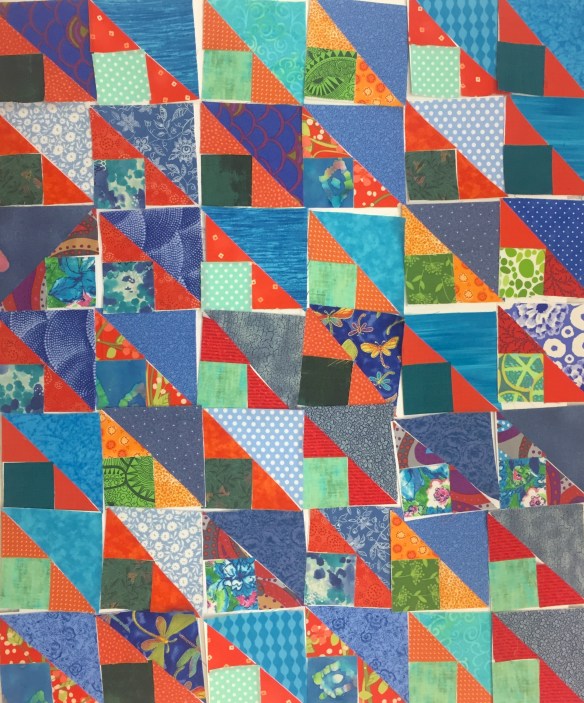
Grandmother’s Choice Block
Everyone is working from the fabric they brought and it’s a stretch to imagine using them together in a quilt, but it is surprising how well the blocks come together.
We change the layout and take more photos:
Each individual knows what they like and what they don’t. We talk about why some colors/values/settings work better than others. My goal is to empower each student, to make color their friend and ally.
Here is the Homeward Bound block in complimentary reds and greens:
It’s fun to put different blocks together, just to see what happens.
This was a 6-hour class, so there was time to mock up several blocks. As the day went on, everyone loosened up and color decisions come quicker and with more confidence.
I love this class because quilters who begin the day nervous, leave knowing that color is their friend. Trust me when I tell you that color is your friend too!
PS: If you are a shop or guild and would like to have me come teach, email me. I’m usually booking about 2 years out.














